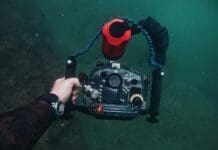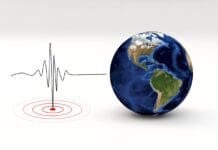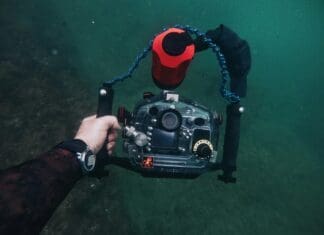This post is also available in:
 עברית (Hebrew)
עברית (Hebrew)
Physicists at Delft University of Technology have developed a new technology on a microchip by combining two Nobel Prize-winning techniques for the first time. This microchip could measure distances in materials at high precision—for example, underwater or for medical imaging.
Because the technology uses sound vibrations instead of light, it is useful for high-precision position measurements in opaque materials. The instrument could lead to new techniques to monitor the Earth’s climate and human health. The work is now published in Nature Communications.
The microchip mainly consists of a thin ceramic sheet that is shaped like a trampoline. This trampoline is patterned with holes to enhance its interaction with lasers and has a thickness about 1000 times smaller than the thickness of a hair.
By measuring the reflected laser light from the vibrating surface, the team noticed a pattern of vibrations in the shape of a comb that they hadn’t seen before. They realized that the trampoline’s comb-like signature functions as a ruler for precision measurements of distance.
This new technology could be used to measure positions in materials using sound waves. What makes it special is that it doesn’t need any precision hardware and is therefore easy to produce.
“It only requires inserting a laser, and nothing else. There’s no need for complex feedback loops or for tuning certain parameters to get our tech to operate properly. This makes it a very simple and low-power technology, that is much easier to miniaturize on a microchip,” says Richard Norte, Assistant Professor at Delft University of Technology. “Once this happens, we could really put these microchip sensors anywhere, given their small size.”


























